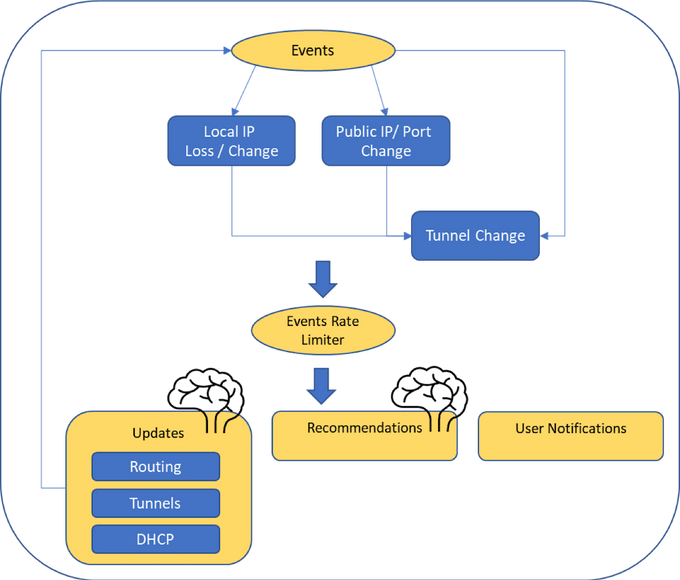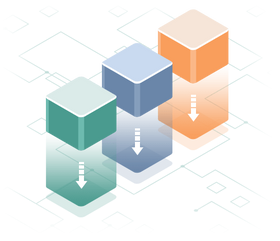AI & ML Are Changing the Face of Enterprise Networks—See What flexiWAN Has in Play
Discover AI-based technologies to self-heal and optimize your network!
Updated May 10, 2024

Enterprise networks and the security of these networks are complex. The introduction of SD-WAN and SASE has allowed for greater network agility and enabled the digital transformation enabling the consumption of cloud applications and serving remote workers on the one hand.
On the other hand, network complexity is increased, making it hard for IT teams and service providers to optimally configure them.
AI & ML can play a role in various network aspects such as:
- Security
- Dynamic traffic steering
- Network optimizations
- Troubleshooting and Fault Management
- Ease of operation
- Traffic and signals prediction
- Traffic classification
With the help of AI & ML technologies, complexity can be reduced and automated, dynamic network and security configurations can be introduced, creating autonomous and self-driving networks that are based on the intent of the user rather than hard configurations.
flexiWAN has been investing in this field for a long time, our recently released version (5.1) is our first introduction to the result of this work. These AI-based capabilities added to flexiWAN will be followed by more AI & ML technologies that will increase simplicity and quality.
Using network-based AI, flexiWAN introduces machine intelligence in flexiManage and flexiEdge for optimizing and improving the overall network quality.
Using AI based technology, Quality Based Routing and Network Healing are offered as dynamic functions that measure the network status and autonomously act to optimize and improve the network usage or suggest configuration improvements.
Quality Based Routing (QBR)
Through this feature, flexiWAN enables dynamic routing decisions as part of the path selection policy according to the application and link performance. The path selection decision is fully autonomous and does not require any threshold configuration. Instead, it estimates the application requirements for optimal delivery and quality, and according to the application service class, the system decides what performance characteristics would provide a good or bad experience for that specific application.
Using network performance metrics measured for each tunnel by the system, it determines the best tunnel to send the traffic on. The system measures, balances, and selects the optimal tunnel (or tunnels) among all available paths in order to meet the following goals:
- Provide good quality experience for each application
- Serve good application experience for as much as possible traffic
- Utilize all available paths
- Promptly detect network changes and act upon them
- Prevent path flapping
Network Healing
Another great feature coming with this release is AI-based Network Healing. This functionally covers and improves multiple segments of the network and improves overall system functions. It can detect various network events, assess them, and make a decision about the required action.
A typical example is the detection of public IP or port changes that impact the tunnel connectivity. The system automatically updates the tunnel to work with the new IP or port without the need for user intervention or network disruption. All issues and actions are notified to the IT admin and are shown in the appropriate flexiManage menus.
The system also provides recommendations for configuration changes that would optimize the network. A typical example is the detection of anomalies in network changes (such as frequent changes in some events) which would require some configuration optimization.
Event actions may or may not trigger additional events, and continue to monitor issues until the system fixes all possible network issues at any given time.
In Conclusion
AI & ML are key technologies that will change the face of networking and security. As networks and systems become more complex to deploy and maintain, AI & ML will become imperative for successful network performance.








